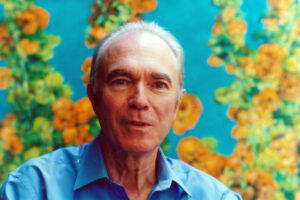ARTIST Juvenal Sansó, born in Spain and based in the Philippines where he became a luminary of modern art, died on March 28 at the age of 95. He is survived by his niece, Carmen Montes.
“It is with great sorrow that we announce the passing of multi-awarded artist Mr. Juvenal Sansó,” said an official announcement by the non-profit organization Fundacion Sansó, which he founded.
The wake will be held from April 1 to 2 at Heritage Memorial Park Chapels 7 and 8 in Taguig City. Mass will be held at 7 p.m. on both days.
“His legacy lives on in Fundacion Sansó; which has been running his museum, authenticating his works, and awarding scholarships to deserving art students, scholars, artists, and cultural workers all over the country, as well as creating programs that promote art and culture, as Sansó wished,” the foundation said.
Born in Reus, Spain, on Nov. 23, 1929, Mr. Sansó and his family emigrated to the Philippines in 1934 to escape civil unrest and settled in Manila where they set up the wrought-iron works Arte Español. After narrowly surviving the horrors of World War II in Manila, he studied painting under Alejandro Celis at the age of 17, and took up Fine Arts at the University of the Philippines where he was taught by National Artists Fernando Amorsolo and Guillermo Tolentino, and by Irineo Miranda.
He discovered modernism by sitting in on the classes of Cesar Legaspi, Galo Ocampo, and Antonio Garcia-Llamas at the University of Santo Tomas. Soon after, he garnered awards at the Art Association of the Philippines and at the Shell National Student Art Competition. It was after this period that Mr. Sansó left for Europe to pursue further studies in Italy and France.
Mr. Sansó exhibited in prestigious museums here and abroad and was bestowed many state recognitions: the Presidential Medal of Merit from the Republic of the Philippines in 2006, the Distinguished King’s Cross of Isabela by King Juan Carlos I of Spain in 2007, and the Chevalier de l’Ordre des Arts et des Lettres by France in 2008.
Galerie Joaquin, the gallery which served as a platform for showcasing his work for the past two decades, described his paintings as “the expert fusion of beauty and melancholy, turning his scenes into powerful reflections of his life and inner world.
“The profound impact of his artistry and the exceptional quality of his work have firmly established him as one of the most esteemed and sought-after artists in the art scene,” the gallery said.
Fundacion Sansó, in its announcement, quoted the late art historian Rod. Paras-Perez to sum up the artist’s legacy: “Sansó believes that the act of painting is an intimate, private confession. The audience is always, for him, an intrusive eavesdropper… It is the point in Sansó’s solitary voyage to the self.” — Brontë H. Lacsamana

